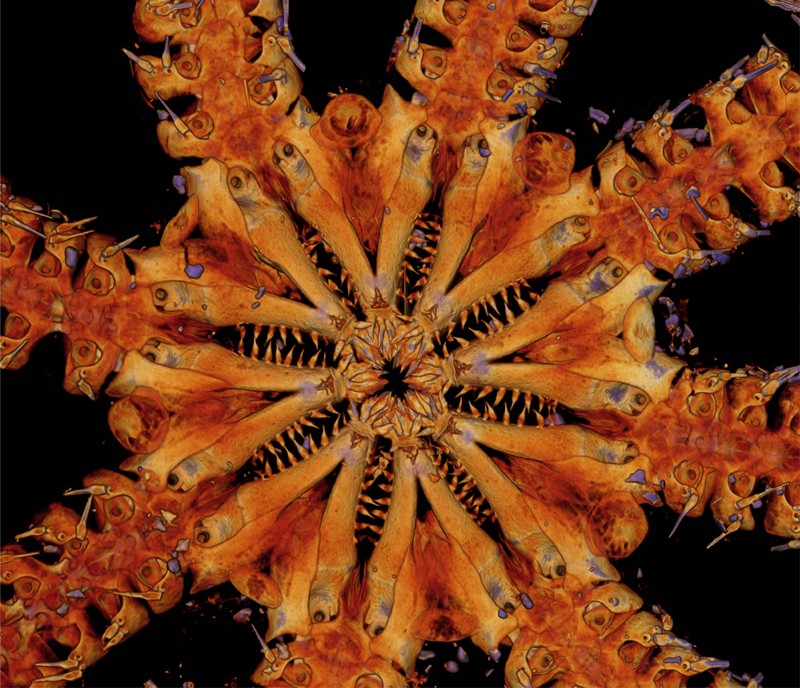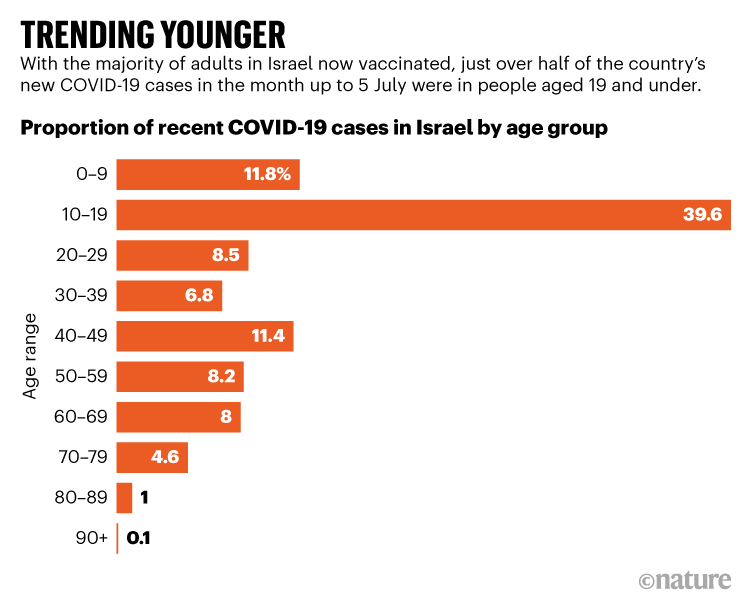Hello Nature readers, would you like to get this Briefing in your inbox free every day? Sign up here.
The month’s best science images
This brittle star, Ophiojura exbodi, belongs to a newly described species, genus and family. It was found on the sea floor at a depth of more than 360 metres, at a site near New Caledonia in the Pacific Ocean. Most brittle stars have five arms, but this unusual specimen has eight, along with eight sets of teeth surrounding the circular mouth in the centre of its body. Researchers say it belongs to a lineage that split from other brittle star families around 180 million years ago, in the late Triassic or Jurassic period.
See more of the month’s sharpest science shots, selected by Nature’s photo team.
Reference: Proceedings of the Royal Society B paper
More than one billion
The number of intertidal animals, such as mussels and sea stars, that were killed by an unprecedented heatwave in North America’s Pacific Northwest, estimates marine biologist Chris Harley. (CBC | 7 min read)
Features & opinion
Why research managers need to be researchers, too
Research managers are essential to a healthy research culture, argues a Nature editorial. But for maximal benefit, more of these academic administrators need to get involved in the scholarly aspect of research.
Read more: ‘We’re problem solvers’: research administrators offer guidance to working scientists (Nature | 8 min read)
Saving the world, starting with salamanders
Biologist David Wake, who has died aged 84, raised the alarm about worldwide amphibian declines in 1989 and spent much of his career mustering the global scientific response to the crisis. His fervor was fuelled by his love of salamanders of the family Plethodontidae, writes biologist James Hanken, a former student. “Dave’s passion for biology, but especially salamanders, was infectious,” writes Hanken. “If you sat next to him during dinner or a long car ride and asked what’s new, it would take only a few minutes before you’d be willing to drop everything and commit the rest of your life to studying plethodontids.”
The Maori past and future of Antarctica
Maori repositories of knowledge, including oral traditions and carvings, support the idea that these early Polynesian settlers of New Zealand have been travelling to Antarctica for centuries. Voyager Hui Te Rangiora might have travelled to the continent as early as the seventh century — a conclusion made by non-Maori ethnologist Stephenson Percy Smith in 1899 and supported by the history of the Ngati Rarua people. But that was just the beginning, emphasizes conservation biologist Priscilla Wehi. “It’s not simply about which humans were in Antarctica first,” says Wehi. “It’s actually about these linkages that have gone on for many hundreds of years and will go on into the future.” Wehi and her colleagues argue that a Maori perspective “offers transformational insight into true collective management and conservation of Antarctica”.
The New York Times | 9 min read (intermittent paywall)
Reference: Journal of the Royal Society of New Zealand paper & Nature Ecology & Evolution paper
"how" - Google News
July 09, 2021 at 05:30PM
https://ift.tt/3yDE7LE
Daily briefing: How COVID damages the brain - Nature.com
"how" - Google News
https://ift.tt/2MfXd3I
https://ift.tt/3d8uZUG
Bagikan Berita Ini
















0 Response to "Daily briefing: How COVID damages the brain - Nature.com"
Post a Comment